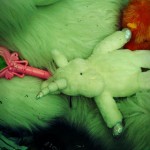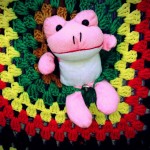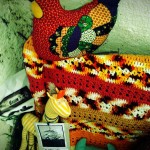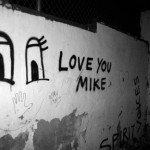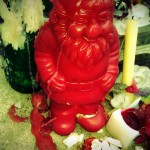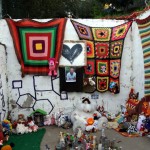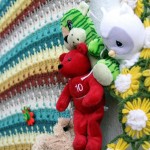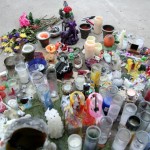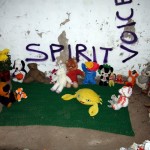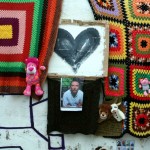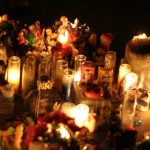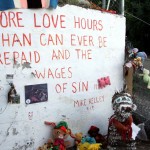Mor Lovehours
|
An homage to Mike Kelley text and images by Caren Spitler On February first I felt the world around me exhale and cease to take another breath. Still coming off a high from the Getty’s Pacific Standard Time performance festival, there was a short moment to reflect on all the things that took place, including the two events produced by my place of work. The performance festival for Getty’s PST closed on January 29th. By Tuesday evening on the first of February it faded away like the taste of a strawberry on your tongue. Mike Kelley, one of the most highly regarded contemporary artists, had passed away at his residence – by his own hand. Hearing this startling news, the moment seemed so absurd, so surreal, that you found yourself thinking it was a tasteless joke. Overall, I feel we’re stuck in a strange moment of time. The feeling in the air still one of breathlessness, a subtle pause. In a spiritual sense, things just feel off-kilter. The passing of Mike Kelley has been devastating for many people who have had various connections to him and his work. My reaction to the passing of this remarkable man is not the same as that of his loved ones, family, students, or colleagues. It also differs from that of those who are deeply entrenched in contemporary art. I feel an uneasy sense of sorrow. Knowing several people who were extremely close to Kelley, I can only imagine the magnitude of what they have experienced over the past two weeks. Of course, I do not feel the depth of sadness they are feeling. Alternatively, seeing myself as an outsider in this world, I don’t view the importance of this loss as it relates to his body work either. Although I’ve worked in the arts for seven years now, I consider myself a tourist who’s a voyeuristic by-stander by virtue of a desk job. I have always had a deep love and appreciation for art (as I see it through my average “unschooled” eyes), and a great respect for what art gives to us, our culture and our humanity. In my own juvenile manner, I eagerly devour what is presented to me and process it in my own way (coming away feeling richer for the experience). In years prior to working in contemporary art, I knew of Kelley in passing but could not match the art to the artist unless it was in front of me. My first exposure was as a music lover, seeing the Sonic Youth cover. I was also quite familiar with “Destroy All Monsters” and knew that they were all fine artists as well as musicians. Later, I would see works here or there and mentally file them away, only later to recall (quite by accident), “oh, that was a Mike Kelley piece”. Over the past few years, I have had the immense pleasure of getting to know the man and his work better. Not much has changed in how I view and process art works. I still have an unfiltered and more common perspective on art that isn’t focused through a lens of academia. Though as much as I treasure getting to know Kelley’s work, he has made an even larger impression on me as a person than as an artist. The passing of Mike Kelley has left a void not just for what he accomplished, or could have accomplished. His legacy is also about the kind of man he was. Obviously he was a man with a great deal to say, and a vehicle with which to say it. Foremost in my mind is how Kelley interacted with others; despite his station in the art world, he was still very much an “every-man”. He was unassuming, and too real to hide behind pretensions. In the hand-full of conversations I was lucky to have with Mike Kelley, what stood out – aside from his enormous intellect (which I greatly coveted) – was his ability to relate, and converse about nearly any subject with just about anyone. In that moment, you seemed to matter. I’d have to believe this is how he was with just about everyone, at least at some point. In fact, I have read things about him recently that validate this line of thinking. Likewise, his work echoed this sentiment. by reflecting on popular culture, he seemed to be very much present in a way most of are not. He could embrace both the dull as well as the divine. Perhaps this made him seem more accessible. In a strange world where everything seems to be just a bit warped and over-exaggerated, he was still down to earth. Still, I sense there is a breathless hush cast over the art community. This is a profound loss of a man who touched many lives on many different levels. The light at the end of this tunnel is that, from whatever he was going through, he is free. For those of us left behind, there are memories, lessons, and experiences. And there is his work, which reflect the many aspects of a very complex man. We have that now, and we have that forever. |
